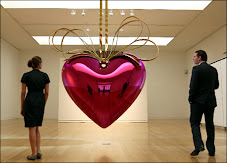Karen Karnes was born in 1925 in New York City. She was raised there, where she attended art schools for children. Her parents were Russian and Polish immigrants who were garment workers and were proud communists. Karen was influenced in many ways by her parent’s philosophies, as she always has respected working in small communities. Karen applied and was accepted to the ritzy La Guardia Art School as a high school student. As a child she was surrounded by urban realities and visual influences, but it seems her parent’s old-world ideals kept her grounded. Karnes today makes more contemporary vessels, which are given different attention to design than her original pottery.
After high school Karen went to Brooklyn College because she wanted to continue her artwork, and be close to home. At the time she was primarily painting and printmaking. Her college sweetheart, David Weinrib, brought her a flower on their first date, and then brought her a lump of clay one of the following days. David had already been up-state where he studied glaze treatments and worked in clay at Alfred University. Their romance led to love, and they decided to leave New York to travel and study. They went to Italy together where they were both overcome by the art of Europe. Karen said that she was especially drawn to the classical Italian forms and the painted glaze techniques. She still today makes many traditional forms, which I believe show how she was impressed by these forms, and in a way still pays homage to them. Today Karen primarily fills her kilns with more contemporary forms, but she continues to produce casseroles, teapots, cups and bowls.
When Karen was in her mid-twenties, she and David decided to move down to North Carolina to attend/work at the Black Mountain College. Karen fell in love with the simplicity of life in the country. Though they were poor, and selling pots to make enough money for food, they had no desire to return to the city. She has stated that what she looked at as a child, including buildings, are visual influences in her work. When she was living in North Carolina she was living with a talented group of people. This group of musicians, philosophers and artists had great parties and discussions at their farm-house. As a group they seemed very interested in stretching the limits of Modernism; working to further the ideas and practices of the Dada and Bauhaus movements. One of her friends at the Black Mountain College was Merce Cunningham, for she lived with his partner John Cage. These two were impressed with Zen Buddhist thought, and were intrigued by what chance had to do with an outcome. They expressed this in their compositions and choreography, in music and dance. “Nichi, nichi kore ko kore.” Every day is a good Day, a Zen Buddhist saying, was one they as a group enjoyed reminding each other of.
The time in the Carolinas was when Karen Karnes became what she wanted to be, a country potter. She was introduced to potters such as Bernard Leach, Shoji Hamada, and local Americans Malcom Davis and Mark Shapiro. She never felt as if she was part of the “Leach Movement”, but she definitely had respect for the work and ideas of Leach and Hamada. Karen decided to live the rest of her life on a farm, working with clay and using old firing practices such as wood and salt firing. She had a disastrous experience a few years ago when her house and studio burned to the ground because of a kiln fire. Karen received many generous donations from a large pottery sale, to help her re-build her country house and studio. Potters from across the globe showed their respect and love by donating works for this cause. Karen received a Graduate Fellowship from Alfred University, and more recently won a gold medal for the consummate craftsmanship from The American Craft Council. Her work is displayed in numerous galleries and permanent collections worldwide.
Bibliography
“Interview with Karen Karnes.” Smithsonian Archives of American Art, Aug. 9-10, 2005
http://www.aaa.si.edu/collections/oralhistories/transcripts/karnes05.htm
“Ceramics, Sculpture and Contemporary Art.” Ferrin Gallery, 2006
http://ferringallery.com/dynamic/artist_bio.asp?artistID=33
Wednesday, November 7, 2007
Subscribe to:
Comments (Atom)
.jpg)










